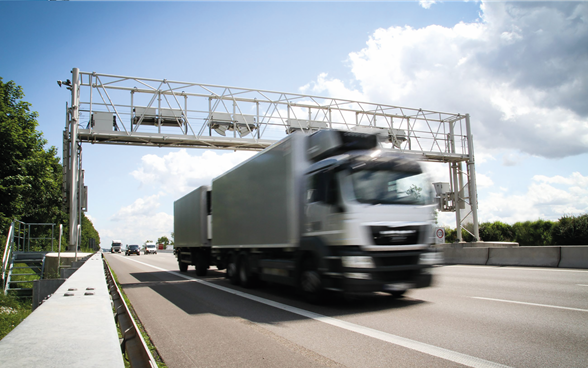The existing infrastructure for levying the Performance-related Heavy Vehicle Charge (HVC / LSVA II) will soon reach the end of its life and will be completely renewed. The replacement by the new infrastructure (HVC / LSVA III) must be completed by the end of 2025.
New system concept
The new system concept for collecting the HVC is based on existing standard services that can be offered to vehicle owners liable to pay the levy by private providers. Instead of defining and procuring a recording device (as is the case with HVC II), the Confederation now defines the data to be supplied by the providers and its quality. The recording and registration of mileage thus becomes a service for those liable to pay the charge. This system approach is open to innovations on the provider market, which in particular also follows the rapid technological development.
Collection services
Domestic vehicle owners continue to record the mileage electronically. For this purpose, they will be able to select a provider from the following collection services in future. Debt collection will continue to be conducted by the FOCBS for all domestic vehicle owners, irrespective of the collection service selected.
- NETS (National Electronic Toll Service): The national electronic toll service NETS provides the service as basic care within the framework of the HVC collection. A provider procured by the federal government will make this service available to the vehicle owners free of charge. The installation of a recording device in an authorised workshop is no longer required. Within the framework of the NETS, other providers can also provide the collection service, for which they have to go through an approval procedure at the FOCBS.
- EETS (European Electronic Toll Service): The European Electronic Toll Service EETS has been available in Switzerland since the beginning of 2021. This collection service already complies with the new system concept. EETS is to become the main collection service for foreign vehicles and will gradually replace the current manual system with the clearance terminals at the border. In future, domestic vehicles are also to be able to use EETS. EETS providers must go through an approval procedure at the FOCBS before they can offer their service for the HVC.






